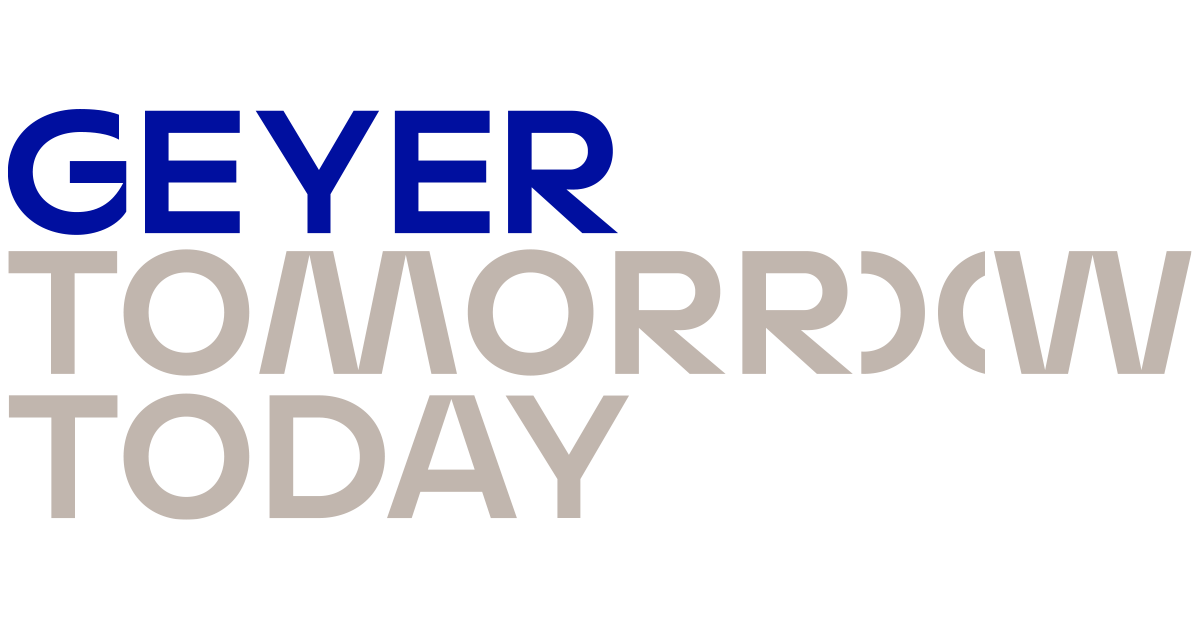Client
Geyer and Valmont
Location
Brisbane
Area
270m²
In many ways, this could have been an impossible brief – to envision and bring to life a workspace for ourselves, meeting our own needs and ensuring the same process we follow and quality we ensure for our clients would be applied successfully for us.
Functionally, the brief we had set as a team was to create a studio space that reflected and supported the variety of our working styles, from design through to construction. The outcome had to offer flexibility, promote connection and demonstrate best-practice design outcomes and importantly, be defined as a workplace that staff could be both proud of and energised by.
Design and subsequent delivery needed to be sympathetic to the building’s heritage, ensuring that the contemporary space we created remained visually connected with the larger built form, and offered true flexibility within.
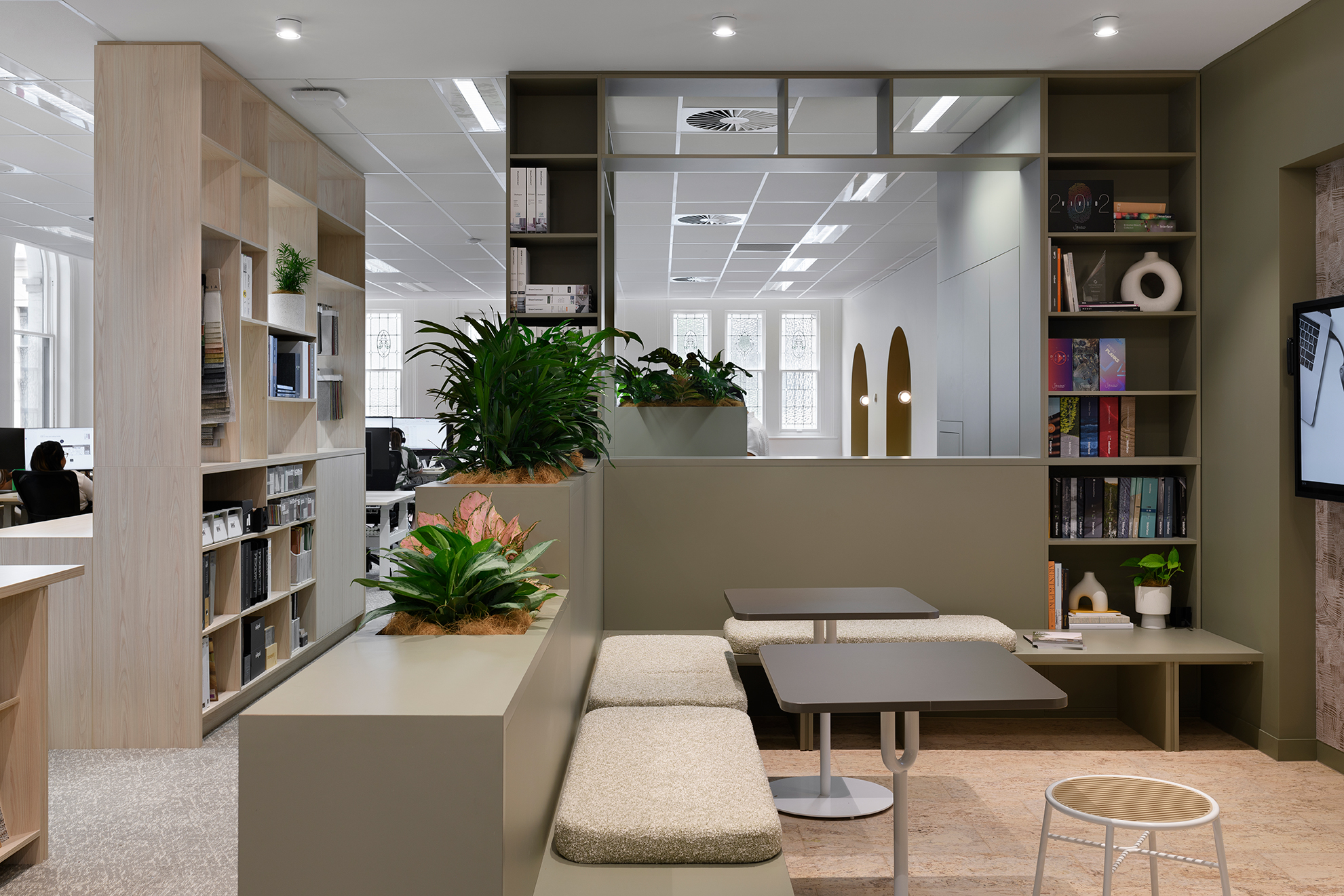
"The design team was involved in the project from the start to the end and the construction team was fully committed to delivering the vision without diluting design integrity."
Kate Tuffley, Geyer and Valmont General Manager, QLD.
Meeting a need
The new space needed to promote collaboration, interaction, teamwork and creativity, fostering greater cohesion between the design and construction processes. Beyond functional requirements, it would need to embody our identity and values, while facilitating diverse types of work.
The layout had to provide a range of multipurpose ‘zones’, and use materials and finishes within each that were conducive to different types of activity. Whether we were meeting clients and presenting a solution, planning a design and discussing its delivery, focusing on ‘deep’ work or researching ideas, all had to be accommodated appropriately and be dual-purpose in nature. The presentation lounge needed to double as a client presentation space and a retreat, while the library would serve as a specification lab and collaboration space, and the kitchen would provide the means to host townhall gatherings and informal meetings.
Weaving function and form
The guiding concept stemmed from the initial construction of the Rowes Building itself in 1885. In time, the ground floor was converted to ‘Rowes Arcade’, and subsequently adorned with decorative mosaic floor tiles, painted ceilings with decorative reveals and feature lighting lining the walls, casting a warm and welcoming ambiance that enticed you to explore the hidden treasures of each boutique.
This notion of layers and sympathetically embedding an old space with a new purpose was the cornerstone of our overarching narrative ‘Duality Revealed’, where the experience is ‘revealed’ at key moments as you move through the space.
At the main entry, a curved wall in a textured render wraps the extended threshold, contrasting with a reflective bronze mirror to create a striking and memorable entry experience.
The client presentation lounge features enveloping joinery that creates a corral for congregation with clients, while maintaining lines of sight through the work area and to the heritage stained glass windows beyond.
As a design-led business, it was important to situate the all-important design library front and centre to showcase the pride and confidence we have in our work, while architectural light boxes with deco-inspired light fittings serve as an integrated wayfinding feature, beginning the reveal of a threshold and a new experience beyond.
Holistically, the space demonstrates the variety of task-based workstyles that can be employed within a workplace: from height-adjustable process workstations, round-format project-based workstations, short-stay focus rooms and stand-up design lab/finishes library, to short-stay informal meet settings, VC enabled rooms, presentation lounge enabled with touch-screen tech and a workspace-enabled kitchen.
Resolving challenges
The building’s original fabric had to be retained, and any construction and fitout work had to allow for back to base, i.e., returning the space to its original form.
Any materials and finishes glued, adhered or painted onto original or significant building fabric had to be completely reversible, without damage to original fabric. This was particularly important for the heritage timber floors, so new wall partitions had to be affixed into the ceiling system. Carpet and cork were laid on tactiles, binding the flooring together as a single layer that floats on the original timber without the need for a more permanent adhesive or mechanical fixing.
Working sustainably
As with every project we design and deliver, all planning and activities were driven by our commitment to a sustainable future, and this project exemplifies this ethos. Furniture and fittings were reused wherever possible, including chairs, the video conference room TV and Polycom video bar, ceiling tiles and lighting.
We used sustainable cork flooring and carpet tiles, without any chemical adhesive for fixing, while E0 board was sourced for all joinery and workstations. Low VOC paints were used and natural plants were placed throughout to assist with the quality of the internal air, as well as helping users feel in touch with nature.
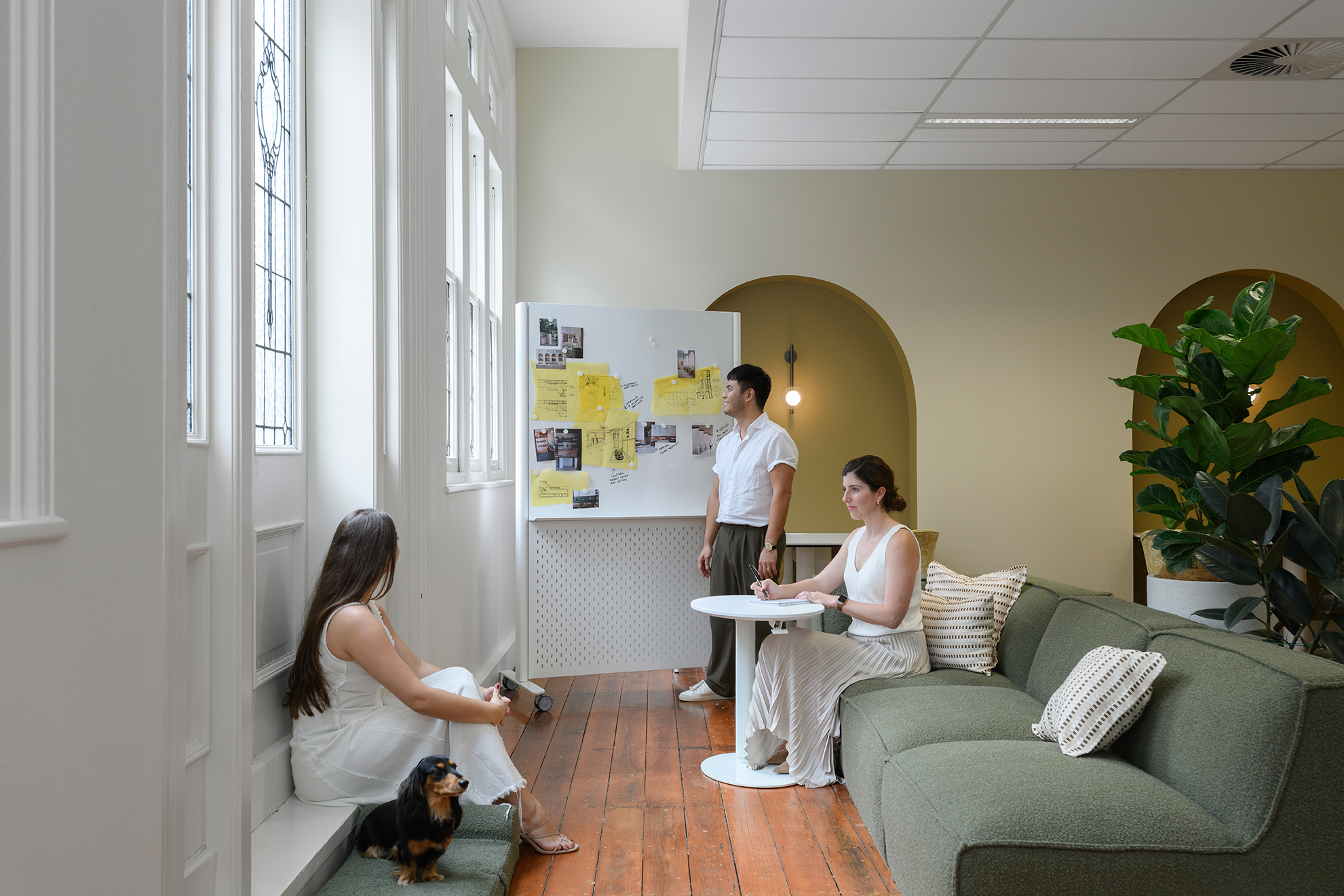

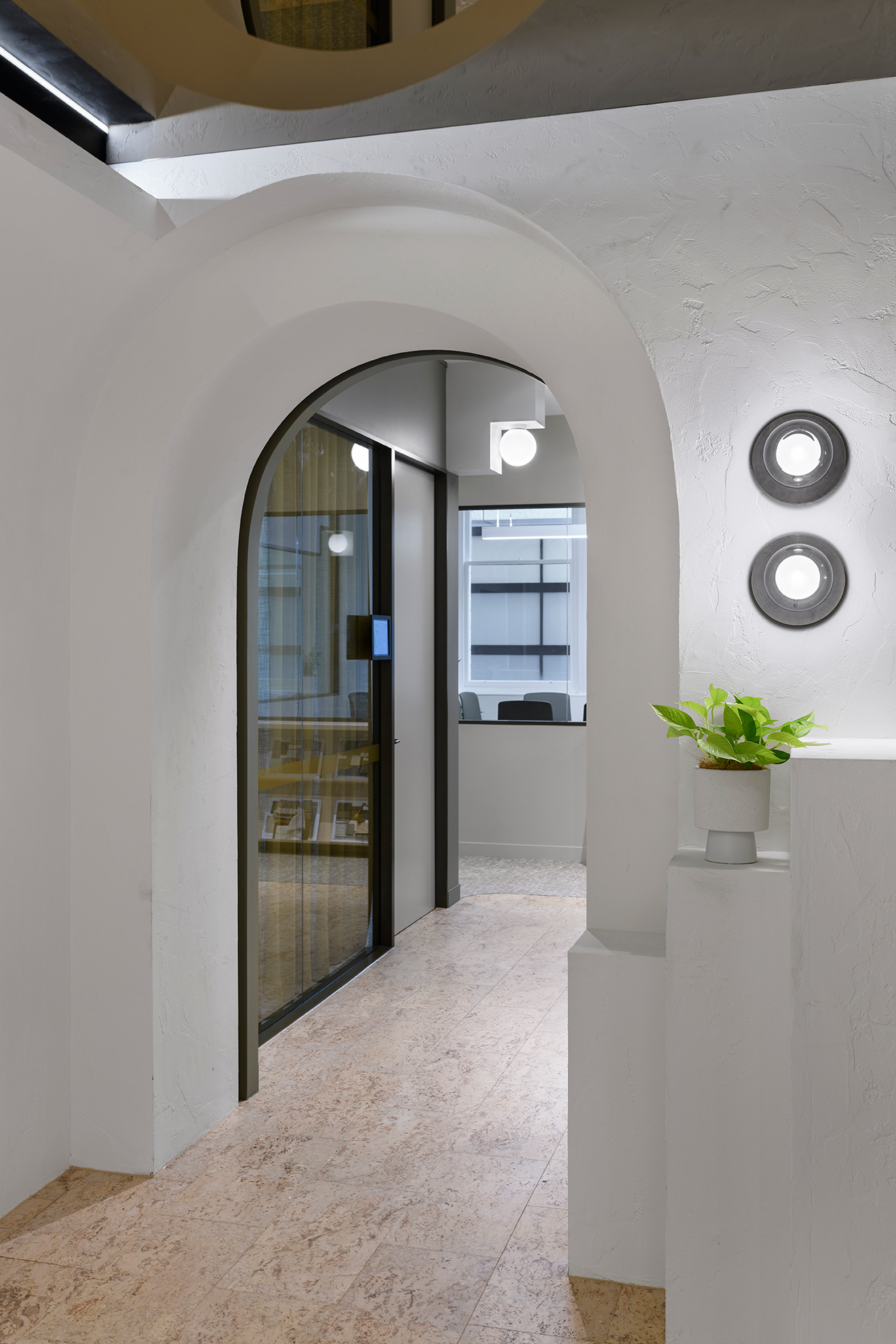
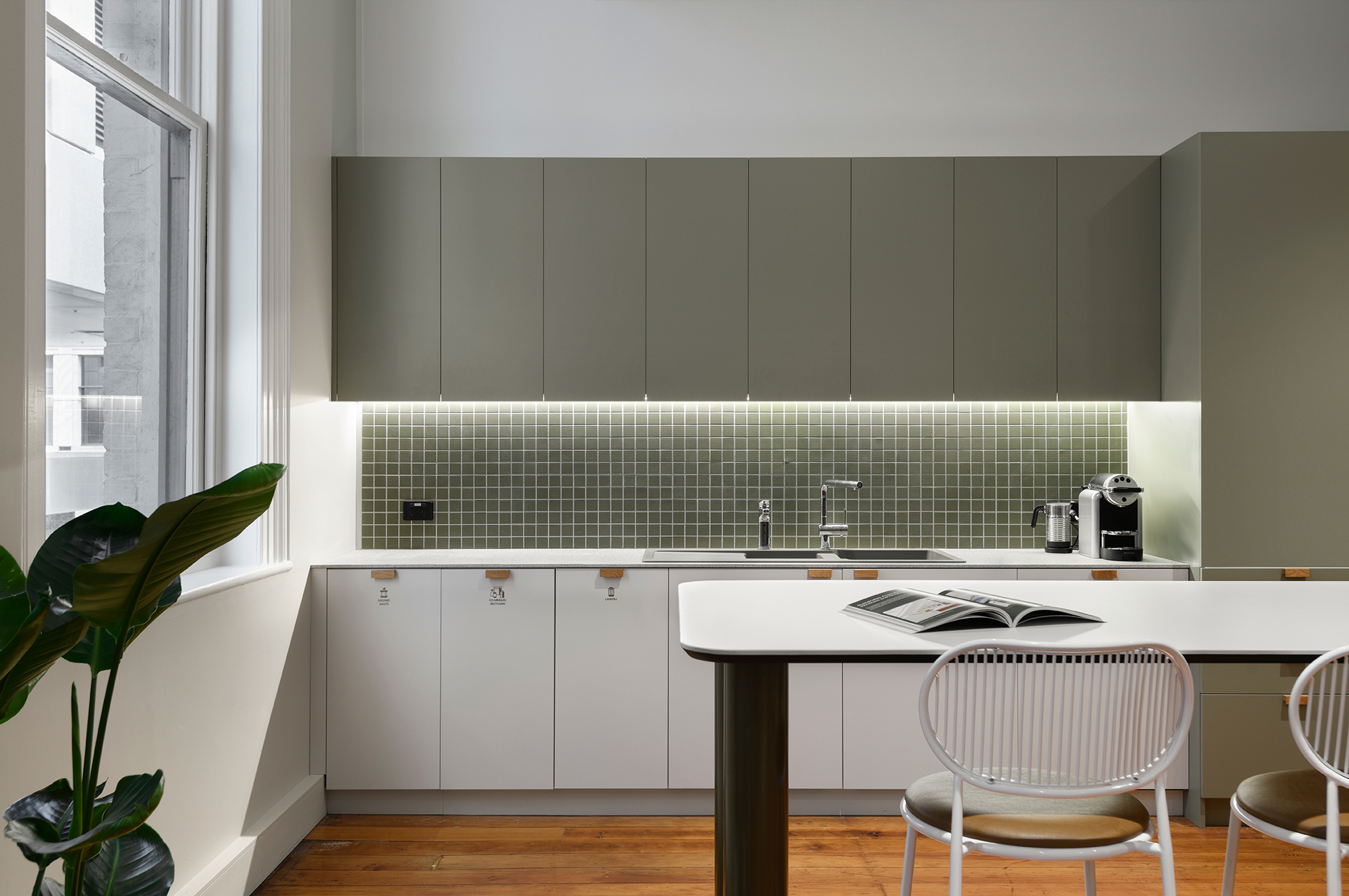
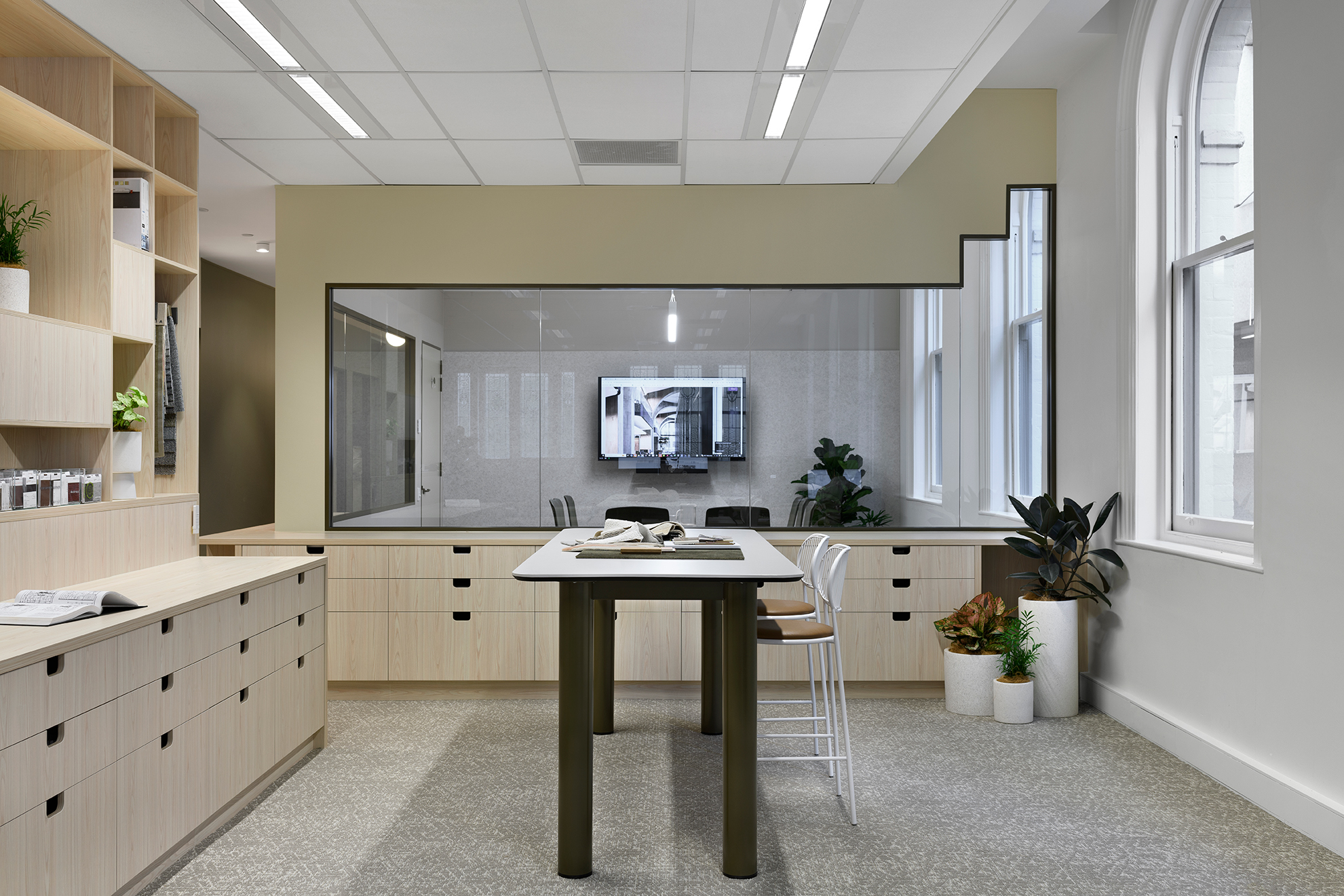
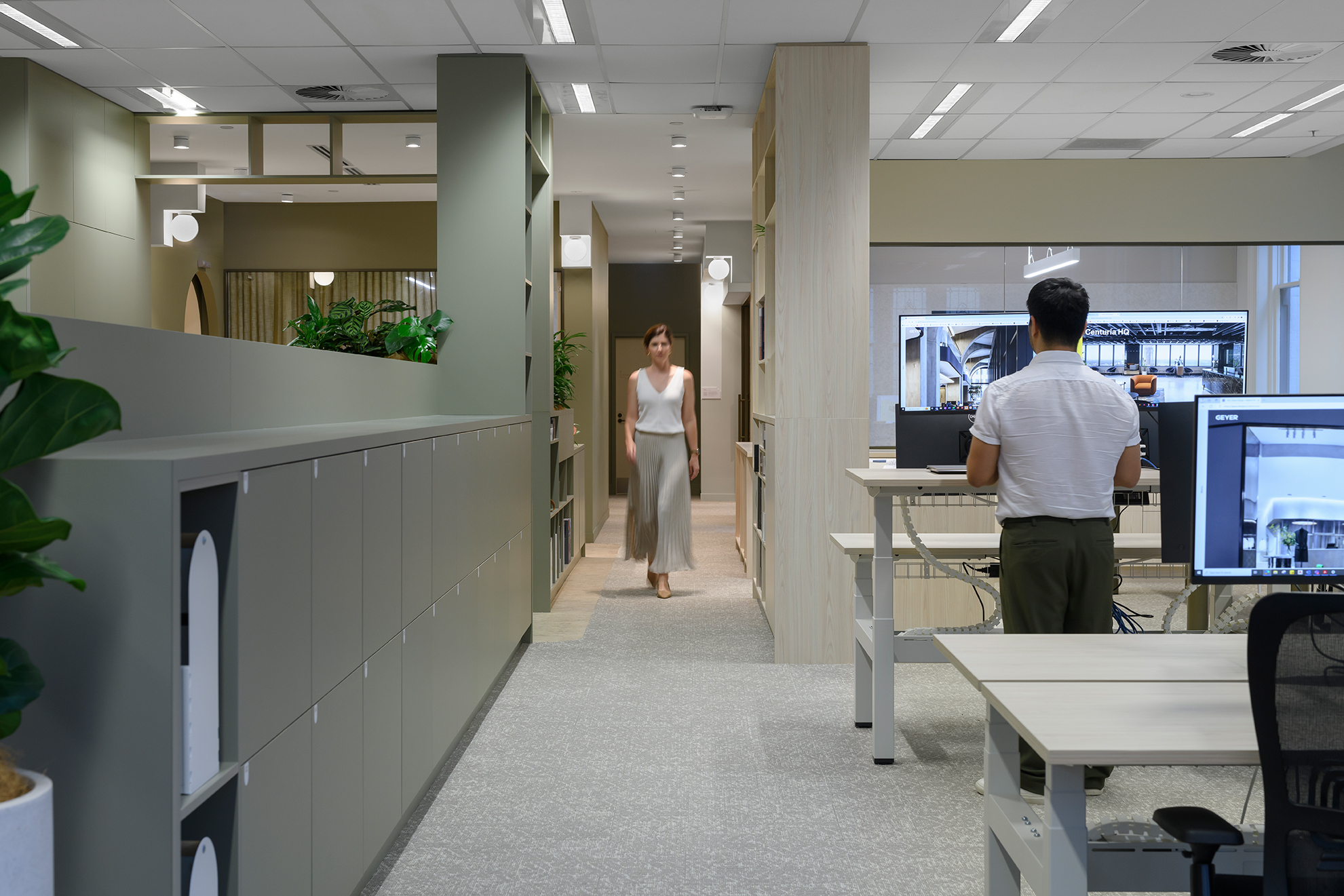
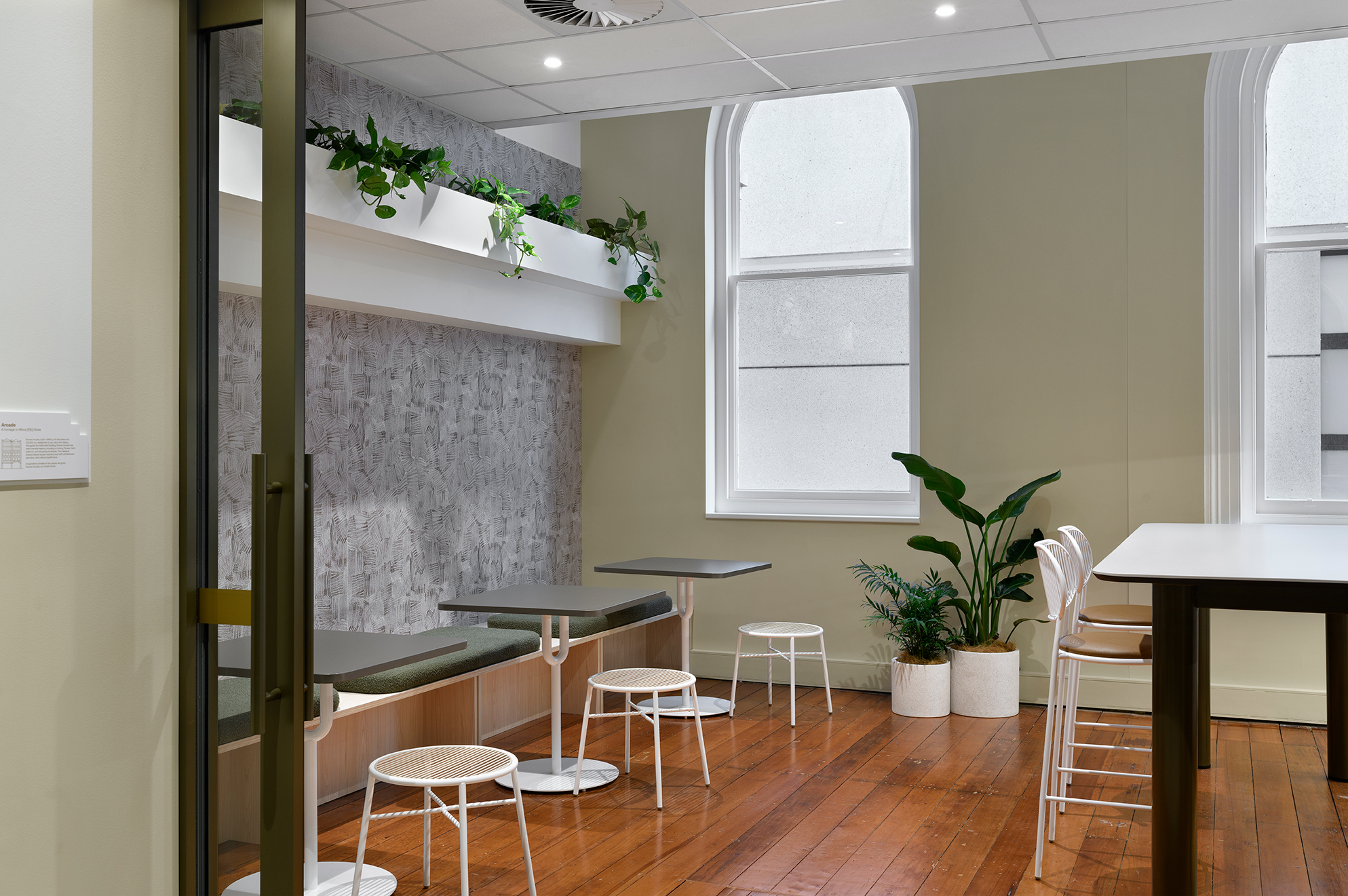
Photographer: Jody Darcy
